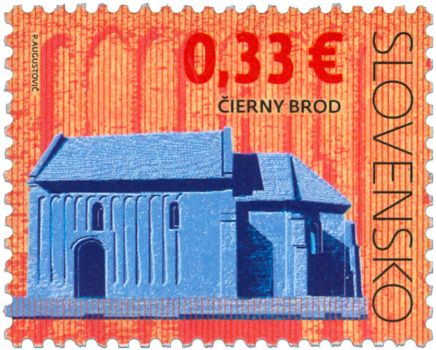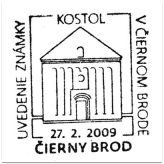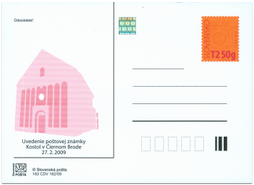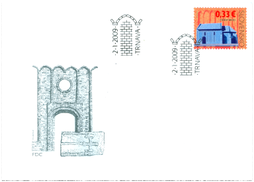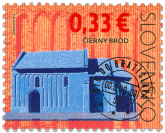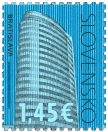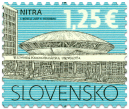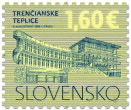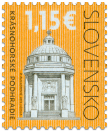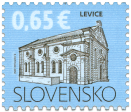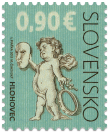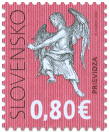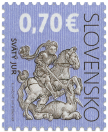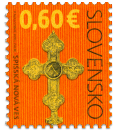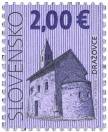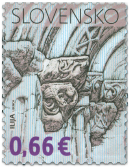443 Date of issue
02.01.2009 Face value
0.33 € Sell price
0.33 €
The specific group of Romanesque monuments on the territory of Slovakia consists of brick constructions spread especially in southern parts. One of them is also the church of Virgin Mary in Čierny Brod (part Hegy) erected during the 20’s and 30’s of the 13th century. The one-nave building with an eastern polygonal presbytery was reconstructed many times and it was only reconstruction works in the 20th century that gave it back its original form. The outer layer of the nave is divided by lisene ending in semicircles creating a thick row of blind arcades on the whole outline. On southern and western nave parts, two almost identical portals have been preserved. They end in semicircles with rectangular framing. Above the western portal, in the central axis of the façade, a round window is situated. Other window openings have a narrow lengthwise form with sloping splays and a semicircular ending. As it is characteristic for the group of the brick architecture, brick was used at the construction of the church in Čierny Brod not only as a construction material for the erection of outer walls but also as a style-setting mean from which decorative architectonic parts were put together. It is probable, that originally plastered and colourfully painted parts of the facade were combined with non-plastered ones which made the visual quality of red brick material stand out even more. The origins of such architecture go back to the Pre-Romanesque period, into the area of Ravena and Lombardy, from where its principles were spread also to other parts of Europe over centuries. Moreover, the proof of Romanesque stone-sculpture is connected also with the church in Čierny Brod. It is represented by a stone relief-decorated plate which was secondarily built into the western façade. It is decorated by a motif of three crosses symbolising Golgotha. The plate could have served as a grave plate. However, what is more probable is that it was a part of an altar antependium – the front wall of the altar table. Bibiana Pomfyová
Show lessSimilar products
654 Date of issue
16.02.2018
628 Date of issue
09.01.2017
606 Date of issue
10.02.2016
580 Date of issue
02.01.2015
555 Date of issue
02.01.2014
532 Date of issue
25.01.2013
510 Date of issue
27.01.2012
490 Date of issue
28.01.2011
467 Date of issue
04.01.2010
449 Date of issue
02.01.2009
438 Date of issue
02.01.2009
445 Date of issue
02.01.2009
© 2024 POFIS - Postal philatelic service. All rights reserved

